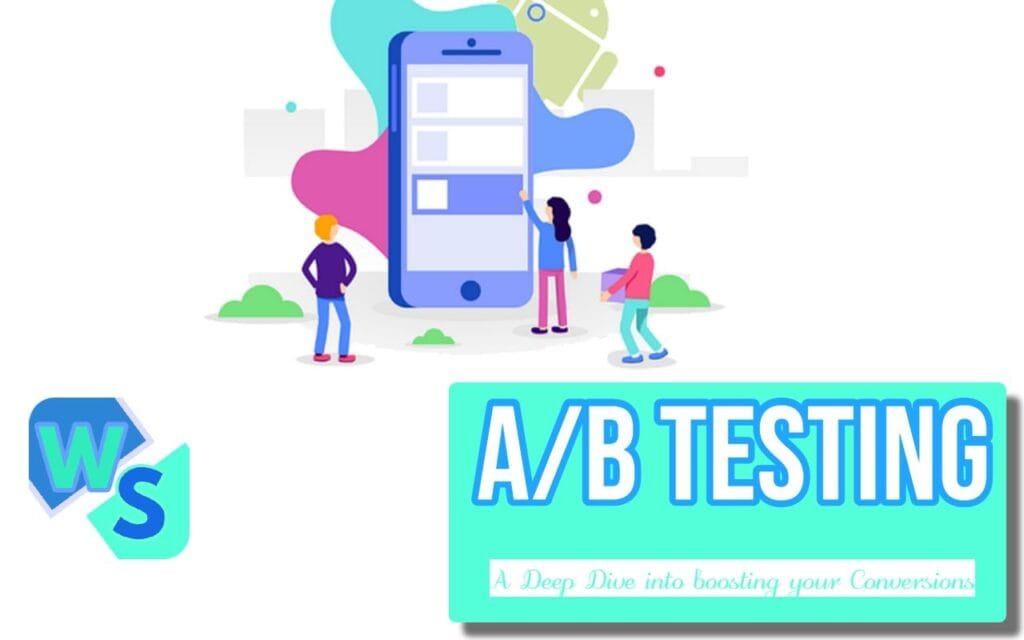Data-Driven Marketing Campaigns
Marketing in today’s digital landscape significantly relies on data. This section outlines the importance of data in marketing and the benefits that come from making data-driven decisions.
Importance of Data in Marketing
Data is vital for shaping effective marketing strategies. The total volume of data is expected to escalate from 64.2 zettabytes in 2020 to an estimated 181 zettabytes by 2025 (Harvard Business School Online). Such vast amounts of information provide invaluable insights that allow organizations to analyze past strategies, adjust marketing approaches, and address customer feedback constructively. Being data-driven means using facts and insights to make informed decisions rather than relying on intuition.
Data collection involves gathering information that reflects audience behavior, preferences, and engagement. First-party data, which is information collected directly by your organization, is particularly valuable as it gives the most accurate understanding of customer interactions with your products or services.
Benefits of Data-Driven Decisions
Making decisions based on data leads to numerous advantages for marketing campaigns. Data-driven decision making helps you drive profits and sales, enhance management practices, and optimize operations, thereby ensuring that choices are based on factual information rather than biases (Asana). The actionable insights derived from data allow companies to:
| Benefit | Description |
|---|---|
| Improve Performance | Data-driven strategies lead to more effective marketing efforts, resulting in improved customer engagement and ultimately higher sales. |
| Optimize Resource Allocation | Businesses can identify the most effective channels and methods, allowing for strategic resource distribution. |
| Enhance Customer Understanding | Understanding customer data enables you to tailor marketing strategies that resonate with your audience’s preferences. |
| Ensure Real-Time Monitoring | Utilizing Business Intelligence (BI) tools allows for monitoring key performance indicators (KPIs) in real time, enabling rapid adjustments (Asana). |
| Foster Continuous Improvement | Continuous analysis of marketing efforts ensures that strategies evolve based on customer response and market trends (Harvard Business School Online). |
Data-driven marketing campaign decisions significantly enhance the effectiveness of marketing strategies, making the understanding and application of data more crucial than ever in developing successful campaigns. For further insights into effective marketing strategies, check our resource on digital marketing campaign strategies.
Making Strategic Marketing Decisions
Making strategic marketing decisions involves leveraging data effectively to guide your campaigns. Understanding the types of data available and the various methods of collecting this information is crucial for driving successful, data-driven marketing campaign decisions.
Types of Data for Decision Making
When it comes to data-driven marketing, different types of data can inform your decisions. The key categories include:
First-Party Data: This is data collected directly by your business through customer interactions, surveys, website analytics, and other sources. It provides insight into customer behavior, preferences, and needs, making it the most valuable data type (Harvard Business School Online).
Second-Party Data: This type of data is collected by a partner organization and shared with you. It’s often considered more reliable than third-party data because it is obtained through direct customer interaction.
Third-Party Data: This data is collected by external organizations without direct relationship with the customers. It can be useful for gaining broader market insights but may lack the specificity and reliability of first-party data.
| Data Type | Description | Value |
|---|---|---|
| First-Party Data | Directly collected by your business | High |
| Second-Party Data | Collected by trusted partners | Medium |
| Third-Party Data | Collected by external sources | Low |
Data Collection Methods
Effective data collection is vital for supporting your marketing strategies. Here are three primary methods companies use to gather customer data:
Directly Asking Customers: You can gather valuable insights by conducting surveys, interviews, or polls. This method allows you to get first-hand information about customer expectations and preferences.
Indirectly Tracking Customers: By using analytics tools, you can monitor user interactions on your website or app. This behavior data helps to understand customer habits and is essential for optimizing their experience.
Appending Other Data Sources: This involves combining your first-party data with third-party data to enrich your understanding of customer profiles. This comprehensive view is essential for creating targeted marketing strategies.
Utilizing AI can enhance your data collection and analysis efforts. AI analyzes large data sets quickly, providing insights that may not be evident through manual analysis. With a solid understanding of the types of data and collection methods, your marketing decisions can be more informed and effective. To explore successful strategies in data-driven campaigns, refer to our article on marketing campaigns examples.
Successful Examples of Data-Driven Campaigns
In the rapidly evolving landscape of marketing, leveraging data-driven strategies can significantly enhance the effectiveness of your campaigns. Here, we explore three successful examples: personalization in marketing, behavior-triggered campaigns, and data integration for optimization.
Personalization in Marketing
Personalization stands as a crucial element in ensuring customer satisfaction and engagement. For instance, DirectTV utilized various data points to personalize its homepage specifically for visitors who had recently moved. This targeted approach resulted in improved performance when compared to the standard homepage version (Adverity). By tailoring the user experience based on individual preferences and circumstances, organizations can create stronger connections with customers, ultimately leading to increased loyalty.
To illustrate the impact of personalization, consider the following table:
| Campaign Type | Engagement Rate (%) | Conversion Rate (%) | ROI (%) |
|---|---|---|---|
| Personalized Campaign | 35 | 20 | 150 |
| Standard Campaign | 15 | 5 | 50 |
Behavior-Triggered Campaigns
Behavior-triggered campaigns capitalize on customer action data to deliver timely messages that re-engage users. Many Software as a Service (SaaS) brands implement such email campaigns to prompt users to complete necessary steps or utilize important features. This approach not only enhances user experience but can lead to increased retention rates.
The following table provides insight into the effectiveness of behavior-triggered campaigns:
| Trigger Event | Open Rate (%) | Click-through Rate (%) | Retention Rate (%) |
|---|---|---|---|
| Feature Usage Reminder | 45 | 25 | 30 |
| Inactivity Follow-up | 50 | 40 | 35 |
| Subscription Renewal Reminder | 60 | 50 | 55 |
Data Integration for Optimization
Data integration plays a vital role in optimizing marketing campaigns. An example can be seen in a winter apparel store that combined sales data with customer behavior data. This integration allowed the business to time promotions more effectively, improving stock management and resulting in a higher ROI (Adverity). Utilizing integrated data sources leads to better forecasting and informed decision-making, supporting your marketing objectives.
The following table highlights the key outcomes of companies that successfully integrated data:
| Key Metrics | Pre-Integration | Post-Integration | Improvement (%) |
|---|---|---|---|
| Promotion Timing Effectiveness | 60% | 85% | 25% |
| Stock Turnover Rate | 5 times/year | 8 times/year | 60% |
| Overall Marketing ROI | 120% | 180% | 50% |
By utilizing these data-driven approaches, your marketing campaigns can become more targeted, efficient, and successful. For further insights, you may explore marketing campaigns examples and integrated marketing campaign examples.
Tools and Technologies for Data-Driven Marketing
In the realm of data-driven marketing campaign decisions, leveraging the right tools and technologies is critical for success. Two key categories that stand out are Business Intelligence (BI) tools and Customer Data Platforms (CDPs).
Business Intelligence (BI) Tools
Business Intelligence tools are essential for simplifying data visualization and making data analytics accessible to individuals without advanced technical skills. These tools allow organizations to monitor key performance indicators (KPIs) in real-time, identify trends and patterns in business data, and generate automated reports for stakeholders.
Popular BI software options include:
| BI Tool | Key Features |
|---|---|
| Tableau | Advanced visual analytics and interactive data visualization. |
| Power BI | Integration with Microsoft products and user-friendly interface for reporting. |
| Looker | Customizable dashboards and embedded analytics for enhanced decision making. |
These platforms enable data-driven decision-making processes by providing actionable insights (Asana). Incorporating BI tools can streamline your marketing strategy by making it easier to analyze data effectively and track performance over time.
Customer Data Platforms (CDP)
Customer Data Platforms are vital for aggregating and managing customer data from various sources. CDPs support data onboarding, which involves transferring offline customer data to online platforms, allowing for a comprehensive view of customer interactions. This integration facilitates targeted marketing efforts and enhances customer experiences.
Key benefits of using a CDP include:
| Benefit | Description |
|---|---|
| Unified Customer Profiles | Combines data from different sources to create a single view of customers. |
| Advanced Segmentation | Enables targeted marketing by segmenting customers based on behavior and attributes. |
| Real-Time Data Updates | Keeps customer data current for timely marketing actions. |
With CDPs, you can utilize predictive analytics, leveraging machine learning and statistical modeling to analyze customer behavior patterns and anticipate future actions. This foresight can significantly enhance the effectiveness of your marketing strategies.
By utilizing Business Intelligence tools and Customer Data Platforms, you can make informed decisions that directly impact the success of your marketing campaigns. For deeper insights into how to measure the effectiveness of these strategies, consider exploring our resource on measuring marketing campaign success.
Enhancing Customer Experiences through Data
Effective utilization of customer data is vital in today’s competitive market. By employing data-driven marketing campaign decisions, you can significantly enhance customer experiences and optimize your marketing efforts.
Utilizing Customer Data Effectively
To effectively utilize customer data, a company must capture it through various methods. This can be achieved by directly asking customers, indirectly tracking their behavior, and appending additional sources of data to your own. This comprehensive approach is essential for a robust business strategy (Business News Daily).
Analyzing the data enables your organization to identify patterns and trends, which can be invaluable for shaping marketing strategies. For instance, contextualized data clarifies how consumers engage with your campaigns. This insight allows you to personalize efforts and target specific audience segments effectively.
Implementing sound data practices is crucial for successful data utilization. This includes obtaining proper consent, anonymizing customer data, securing data storage, and limiting data retention. Moreover, training employees on privacy practices and monitoring third-party vendors’ compliance can help build trust with customers while fostering ethical marketing practices (Growth Natives).
| Data Practice | Definition |
|---|---|
| Proper Consent | Gaining permission from customers before using their data. |
| Anonymizing Data | Removing personal identifiers from data sets. |
| Securing Data Storage | Protecting data from unauthorized access. |
| Limited Data Retention | Storing data only as long as necessary for its intended use. |
Tailoring Marketing Strategies
Tailoring marketing strategies involves leveraging customer data to optimize various aspects of your campaigns. Companies that effectively use customer data experience significant improvements in customer satisfaction and overall business growth. This underscores the importance of data-driven decision-making in maximizing opportunities from customer data (Growth Natives).
You can utilize data analytics to tailor your marketing strategies. This may include segmenting your audience based on purchasing behavior, preferences, and engagement levels. By delivering personalized content, offers, and communication through targeted marketing strategies, businesses can foster a closer relationship with their customers.
Data-driven insights can inform your product development and marketing messaging, ensuring that your campaigns resonate with the audience. This results in enhanced customer experiences, improved brand loyalty, and increased conversion rates.
Utilizing customer insights to inform your digital marketing campaign strategies not only optimizes resource allocation but also improves the overall effectiveness of your efforts. For further insights, you may explore our sections on email marketing campaign automation and effective email marketing campaigns.
By embracing a data-driven approach, you can elevate your marketing campaigns, better engage your customers, and ultimately achieve greater business success.
Key Metrics for Evaluating Success
In the realm of data-driven marketing, measuring success hinges on specific metrics that provide insights into the effectiveness of your campaigns. By thoroughly tracking these key performance indicators, you can make informed decisions to optimize your marketing strategies.
Tracking Marketing Performance
For effective evaluation of your marketing campaigns, certain metrics are fundamental. These metrics help you assess the success of your initiatives and refine future campaigns based on data-driven insights.
| Metric | Description |
|---|---|
| Conversion Rates | The percentage of users who take a desired action after interacting with your campaign. This indicates the effectiveness of your messaging and offer. |
| Customer Lifetime Value (CLV) | The total revenue expected from a customer over the duration of their relationship with your business. High CLV signals successful customer retention strategies. |
| Return on Ad Spend (ROAS) | This measures the revenue generated for every dollar spent on advertising, allowing you to evaluate the financial effectiveness of your marketing investments. |
These metrics can be tracked using various analytics tools and will help you gauge the effectiveness of campaigns based on measuring marketing campaign success.
Measuring Customer Engagement
Understanding customer engagement is critical for refining your marketing strategies. Engagement metrics reveal how effectively your audience interacts with your campaigns.
| Engagement Metric | Description |
|---|---|
| Click-Through Rates (CTR) | This metric indicates the percentage of users who click on a link in your email or advertisement, providing insight into the effectiveness of your content and calls to action. |
| Bounce Rates | The percentage of visitors who leave your site after viewing only one page, helping assess the relevance and quality of your landing pages. |
| Social Media Engagement | This includes likes, shares, comments, and overall interaction across your social media platforms, reflecting brand awareness and customer interest. |
By diligently tracking these metrics, you can fine-tune your campaigns to enhance customer engagement and capture attention more effectively. For further examples and insights, consider exploring marketing campaigns examples or digital marketing campaign strategies to understand how successful brands measure and improve their performance.
Challenges of Data-Driven Marketing
Incorporating data into marketing strategies presents several challenges that can hinder effective decision-making. Among these challenges, poor data quality and implementation struggles are particularly prominent.
Poor Data Quality
Data quality is a significant concern for organizations aiming to implement data-driven marketing campaign decisions. A striking statistic indicates that nearly half of new data records may contain critical errors. This can lead to misleading analyses and ultimately misguided marketing strategies. Despite the recognition of data-driven marketing as a crucial initiative by about 70% of marketing and sales executives, only approximately 2% have reported a positive impact from investing in these solutions.
Ensuring data accuracy is imperative for effective marketing. Poor quality data can stem from various factors, including incorrect data entry, outdated information, and improper storage practices. Businesses must implement robust data validation processes and invest in clean-up efforts to improve their data quality.
| Data Quality Concern | Impact on Marketing Campaigns |
|---|---|
| Incorrect data entry | Misleading targeting |
| Outdated information | Ineffective strategies |
| Improper storage practices | Data loss or corruption |
Implementation Struggles
The implementation of data-driven marketing initiatives can also pose significant challenges. Many companies struggle to develop the right data processes, recruit skilled personnel, and gain access to appropriate infrastructure required for successful execution. The combination of fragmented data sources and varying levels of team expertise can lead to inefficient marketing efforts.
Additionally, compliance with data privacy regulations, such as the European Union’s GDPR and U.S. laws like the CCPA, may complicate the implementation of data practices. Businesses are required to navigate strict rules on data capture, storage, and usage to protect consumer privacy (Business News Daily).
Overcoming these implementation challenges involves creating a comprehensive strategy that prioritizes data governance, ensures team training, and aligns data initiatives with overall marketing objectives. Understanding how to manage data ethics while maintaining transparency with customers is essential for building trust in your marketing campaigns. For more insights, explore our resources on measuring marketing campaign success and digital marketing campaign strategies.
Future Trends in Data-Driven Marketing
With the fast-paced evolution of marketing strategies, two key trends are shaping the future of data-driven marketing: predictive analytics and AI-powered marketing techniques. Engaging with these innovative approaches can significantly enhance your marketing campaign decisions.
Predictive Analytics
Predictive analytics employs machine learning and advanced statistical modeling to scrutinize customer data, uncover patterns, and forecast future behaviors. This technique empowers you to anticipate consumer needs and tailor your marketing efforts accordingly. By harnessing predictive analytics, businesses can identify high-value customers, optimize their resources, and minimize risks associated with marketing investments (Adobe Business Blog).
A summary of predictive analytics applications in marketing includes:
| Application | Description |
|---|---|
| Customer Profiling | Understand customer segments and preferences to enhance targeting. |
| Forecasting Trends | Predict industry trends and customer behavior shifts. |
| Risk Assessment | Evaluate potential marketing failures before execution. |
| Campaign Optimization | Adjust strategies based on predicted outcomes for better results. |
Incorporating predictive analytics into your marketing strategy allows for a more proactive approach, leading to improved customer satisfaction and higher conversion rates.
AI-Powered Marketing Techniques
AI-powered marketing integrations are transforming how marketers process and analyze data. By analyzing large quantities of data swiftly, AI provides valuable insights that may go unnoticed by human analysis. Utilizing AI can help you identify trends and patterns in customer behavior, ensuring more informed and timely decision-making.
AI Marketing Analytics specifically refers to the application of artificial intelligence in evaluating substantial amounts of marketing data. This not only improves campaign performance but also enhances customer targeting and return on investment (ROI) by automating tasks like data collection, pattern recognition, and predictive analysis (TechFunnel).
Key advantages of AI in marketing include:
| Benefit | Description |
|---|---|
| Speed | Rapid analysis of vast datasets leads to quicker decision-making. |
| Accuracy | Enhanced data processing yields precise insights and forecasts. |
| Efficiency | Automation of routine tasks allows marketers to focus on strategy. |
| Personalization | AI-driven insights enable highly targeted marketing efforts. |
Embracing these technologies will position your business at the forefront of data-driven marketing campaign decisions, allowing for strategic innovations and competitive advantages in your marketing initiatives. For more insights on maximizing your marketing campaigns, explore our resources on marketing campaign performance metrics and digital marketing campaign strategies.





















